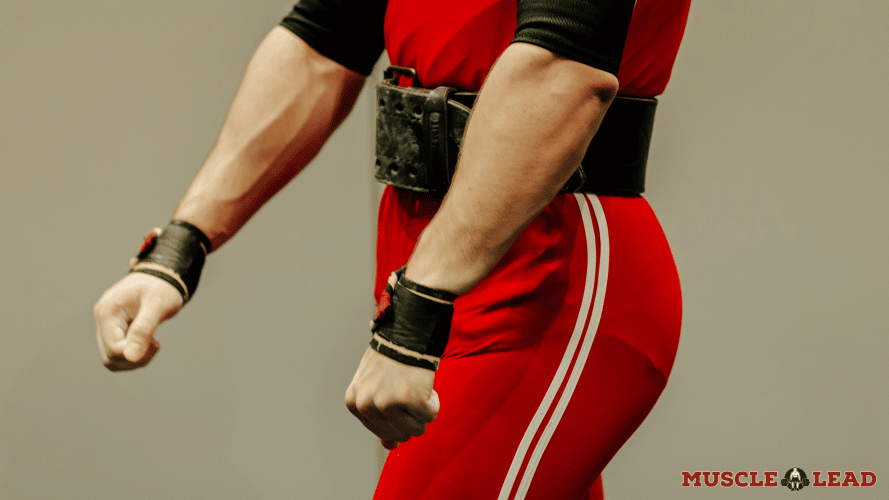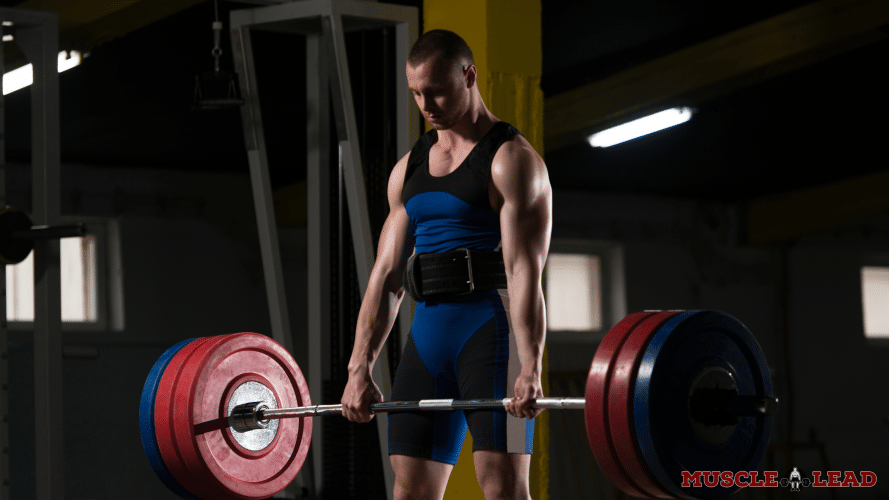Key Points
- Bracing engages all of the core stability muscles that help to keep the spine in a neutral and safe position.
- To get the best possible brace while lifting, you should wrap the powerlifting belt around the belly button, in between the rib cage and lower back.
Hats off to those who have made the investment and bought their first powerlifting belt.
The powerlifting belt is a great training accessory for sure, but the problem is that most don’t optimize it for bracing.
For this reason, I have highlighted the main core stability muscle groups and then revealed my top 4 key points to consider for how to brace with a belt. These include:
- Belt Position
- Belt Tightness
- Bracing Technique
- Breathing Technique
I finalize the article by answering some very important frequently asked questions regarding the belt, and then your take-home message.
Core Stability Muscles
Before getting into the heart of the article, let’s cover the core stability muscles. These are the muscles involved in bracing during major lifts like the squat and deadlift. (1)
Rectus Abdominis

The rectus abdominis is the ‘six pack’ muscle group and is located at the front of the midsection. This muscle group can contraction isometrically to help stabilize the spine from rounding.
Erector Spinae
A muscle that most ‘gym goers’ aren’t too familiar with. The erector spinae certainly deserves some spotlight as it’s one of the major muscle groups for stabilizing the spine. The erector spinae consists of around 8 muscles and a common tendon.
The abs are involved in heavy lifts
Transversus Abdominis
This is the deep muscle located behind the rectus abdominis. It also contributes towards keeping the spine in a neutral position.
Obliques
The internal and external obliques are core stability muscles that run down the side of the trunk, either deep or superficial. Their main purpose during major lifts is to prevent the spine from twisting.
Pelvic Floor Muscles
These are the invisible muscles located in the pelvis below the trunk of the body. The pelvic floor muscles secondarily may help stabilize the lower part of the spine.
Multifidus
The muscle that goes down the spine and offers some stability. This muscle is strongest and thickest in the lower back
How to Brace Your Core with a Powerlifting Belt
To brace your core with a powerlifting belt, you need to consider these four points for the best performance and safe workouts.
1. Belt Position
Many lifters have the idea that the powerlifting belt is designed to protect the lower back.
Does a Weightlifting Belt Help With Lower Back Pain
So, they apply the belt directly around this region. In fact, the powerlifting belt helps protect the spine as a whole, from the sacral (bottom) to the cervical (top). (2) For this reason, a low belt placement probably will not draw the major muscles of the core.
Conversely, some lifters tend to wrap the powerlifting belt around their rib cage.
However, this position can introduce two other problems. Firstly, this hinders the core stability muscles instead of allowing them to brace properly. Secondly, the pressure can damage the rib cage to some extent.

The rib cage placement is not recommended!
Ideally, the powerlifting belt should be applied around the belly button of the waist, allowing a contraction in all core stability muscle groups.
How to Wear a Weightlifting Belt Properly?
2. Belt Tightness
The whole point of the powerlifting belt is to have some external resistance to press the mid-section against and create intra-abdominal pressure. (2)
A belt that is too loose will fail to provide much external resistance. I don’t want you to read this and go strangling your waist with the powerlifting belt.
Applying the powerlifting too tight can limit intra-abdominal pressure, breathing, and range of motion during squats and deadlifts. In other words, it can affect safety and performance during heavy lifting.
You should go for that snug ‘sweet spot’ in tightness, which differs from person to person depending on hip width and fat mass. Therefore, I can’t just recommend an exact lever or pinhole.
Find out the Ideal Lifting Belt Tightness for You
3. Bracing Technique
To optimize safety and performance, just wearing the lifting belt alone won’t do the trick.
There are other key steps to follow, which take some practice to perfect.
From what we know about powerlifting belts, the optimal way of bracing would be to breathe down into the belt while pushing the midsection out in a 360° manner. (2)
This bracing technique must be applied before performing the initial part of any major compound lift. Let’s put this into the perspective of YOUR squat and deadlift.
How to Brace with a Belt for the Squat
So you’ve got to the point of completing your squat walkout and have formed a strong stable base.
The next key step to optimizing bracing would be to take a deep breath towards your lower abdominals.

Next, make the intention to drive the whole midsection against the belt, before squatting down.
How to Brace with a Belt for the Deadlift
So you’ve loaded up the barbell and are getting amped up to hit some big numbers.

You’ve set yourself up and have gripped the barbell tight. Once again, you should take a deep breath towards the lower abdominals. Then drive the midsection against the belt, before the initial ground reaction force to perform the lift.
4. Breathing Technique
Bracing and breathing are not the same here. Breathing is your tempo and when you inhale and exhale.
You must hold your breath while performing the first part of the lift before breathing out. (2) I’ve touched on how this would work for the squat and deadlift below.
How to Breathe with A Belt for the Squat
Assuming that you’ve taken the ‘how to brace’ step above, to maintain this tension, you must hold your breath while squatting down.
Once you reach the triple flexed position, formally known as ‘the hole’ and begin squatting up, it would be ideal to slowly release your breath.
How to Breathe with a Belt for the Deadlift
Hold your breath while pulling the barbell up and then release it after the final part of the deadlift. You should be retracting the scapula (pinning the shoulder blades back) and dropping the bar back to the ground.
FAQs
Absolutely not, you can perform all of your major lifts without the powerlifting belt, but it may boost performance by around 3-5% in lifts like the squat and provide an element of safety.
Load bearing exercises like the barbell squat and barbell deadlift, put a considerable amount of tension on the spine. Bracing engages all of the core stability muscles that help to keep the spine in a neutral and safe position. Bracing can also maintain a constant flow of energy during a lift like the squat and may modify performance.
Final Thoughts
You should know exactly where the core stability muscles are located, and how they help to keep the spine in a safe position during major lifts.
All in all, to get the best possible brace while lifting, you should wrap the powerlifting belt around the belly button, in between the rib cage and lower back.
Make sure that the belt is a snug fit, to form a strong midsection brace. Ensure that the belt is not too tight nor too loose, as this can be ineffective and possibly dangerous.
This should be followed by breathing down into the stomach and pushing the midsection against the belt, then maintaining this tension throughout the lift.
In terms of breathing, a lifter should hold the breath until the later part of the movement. After which you should exhale.
References
- Oliva-Lovano, J.M., &., Muyer, J.M. ‘Core Muscle Activity during Physical Fitness Exercises: A Systematic Review’ International Journal Of Environmental Research And Public Health. 2020; 17(12):4306
- Lavender, S.A., Shakeel, K., Andersson, G., et al. ‘Effects of a Lifting Belt on Spine Moments and Muscle Recruitments After Unexpected Sudden Loading’ Spine. 2000; 25(12): 1569–1578
More On Lifting Belts:





